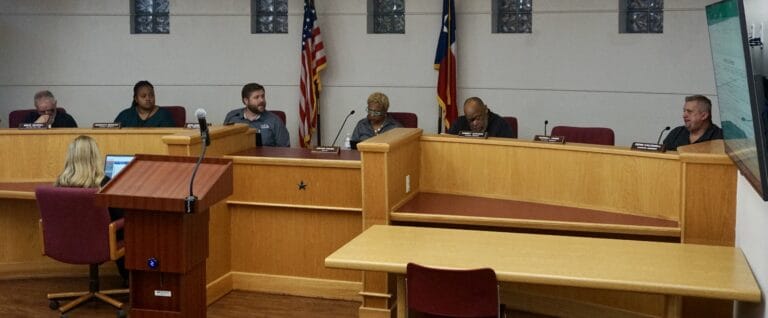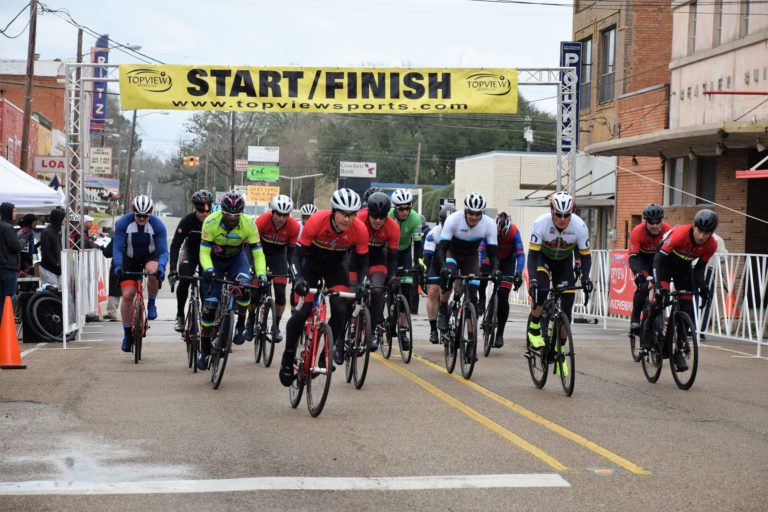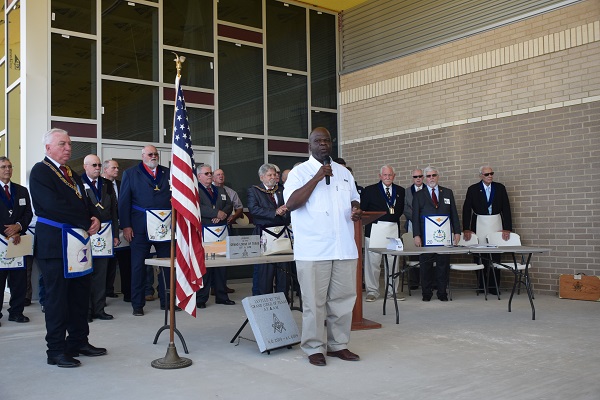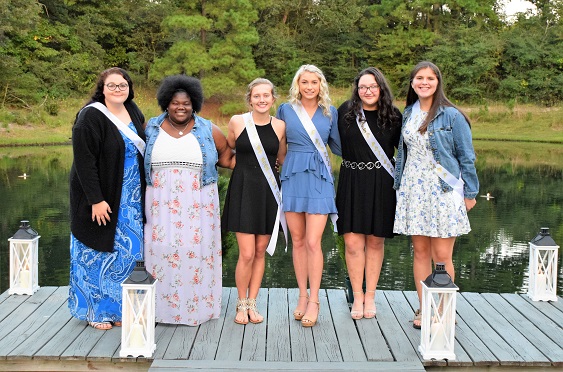A Day in the Life at the Lufkin Zoo, Part One

Part 1
By Sarah Naron
Messenger Reporter
LUFKIN – For many individuals, the idea of becoming a zookeeper is a pipe dream held at some point during childhood.
For Lufkin resident Ashley Orr, who grew up on a farm in Oklahoma, it is a reality.
“That definitely ran its course,” Orr said of her early desire to work in a zoo. “I had decided by the time I hit college that I wanted to do something in the medical field.”
Orr entered college as a pre-med major and had a change of heart during her junior year.
“I’m like, ‘You know, I don’t know that I’m really that crazy about people,’” she recalled. “People are okay, but a whole career working with people day in, day out – I don’t know if that’s really for me.”

Orr was encouraged by an “older, wiser” friend to pursue a career as a zookeeper, an idea which she dismissed as “kind of like a kid thing” and “kind of far-fetched.”
The friend persisted, and soon, Orr opted to follow the advice, eventually landing an internship at Fossil Rim Wildlife Center in Glen Rose during which she cared for rhinoceroses.
“Going into that internship, I thought, ‘Ah, rhinos – big, scary, maybe kind of dumb, hotheaded animals,’ Orr explained. “On the farm I grew up on, you can pet the cows, you can pet the horses, you can pet the goats – everything’s friendly. And I’m like, ‘Geez, this summer, I’m not going to be able to get my hands on these animals at all.’”
While Orr found the rhinos to be “scary and intimidating” at first glance, she soon realized “they’re the biggest puppy dogs you can imagine” who desire the full attention of their keepers.
“They’ll do just the silliest things to try to get your attention,” she said. “We had one four-year-old…he wanted attention so bad. I’d be across the hallway, trying to prepare diets for the next day or something, and he would climb up (with) his front feet on his water trough so he could look over the fence, and then, he’d huff like, ‘Pay attention.’”
If the first gesture failed to gain the rhino – nicknamed Inky – the attention he sought, Orr explained that he would resort to more drastic measures.
“He would go over to his hay pile, which was supposed to be his food,” she remembered. “He would scoop it up and have it all over his head. So, now, he’s wearing this blond wig. And then, he would climb back up on his water trough and huff.
“And I’m like, ‘Well, how am I supposed to ignore that?’” Orr chuckled. “So, of course, I drop what I’m doing, and I go love the rhino. They’re so charismatic and irresistible, and they were all like that.”
Following her Fossil Rim internship, Orr was convinced that being a zookeeper was truly the right career path for her.
“(I thought) that would be the best job on Earth,” she said. “And it truly is.”
As Orr explained, a four-year college degree in a field such as zoology or biology is required of individuals hoping to become a keeper.
“To get a job, they want you to have experience, so you get into that situation – ‘Well, how do I get experience if you won’t hire me to get experience?’” she continued. “So, what most keepers do is, they go work for free somewhere; they take an internship, or they volunteer and get up enough hours and enough experience and then say, ‘Please hire me!’”
Upon securing an entry-level position, Orr said, zookeepers are typically assigned to work with animals which are considered the less dangerous.
“It’s not usual that you would get hired into working with big cats or working with rhinos or elephants or great apes,” she explained. “Those are considered to be more dangerous, obviously.”
According to Orr, one of the main challenges faced by zookeepers is the need to be perfect.
“A mistake in an office setting means you jammed up the copier or something,” she said. “A mistake here is awful. So, every single day, you must be perfect.”
Prior to accepting a job at Ellen Trout Zoo in Lufkin last month, Orr spent eight years as a keeper at the Dallas Zoo.
“We counted once, (and) just in the section I worked with – where we had mandrils, chimps and gorillas – if you were the keeper who was closing at the end of the day, there were, like, 80 different ways you could make a mistake,” Orr said. “That’s locks, that’s safety signs, that’s the board that shows the doors that are open and the doors that are closed – that’s all the things you have to check to make sure just right that that building is secure and safe and your animals are exactly where they need to be.”
The estimated 80 possibilities for mistakes, Orr, said, did not include the opportunities for mistakes to be made throughout the remainder of a keeper’s shift.
“So, really, (there) are hundreds of opportunities to make a mistake,” she pointed out. “And you have to be perfect. One mistake is not okay. Not on a single day. And it doesn’t matter if you come to work tired or if you’ve got stuff going on at home – when you get here, your focus has to be a hundred percent on what you’re doing.”
Despite its challenging nature, Orr described being a zookeeper as “the best job in the world.”
At Ellen Trout, Orr is responsible for caring for animals such as birds and small primates. As she began her rounds on the morning of Wednesday, March 8, one of the first “residents” she checked in on was Linda, a toucan who she explained has recently been “under the weather.”
Orr explained that the zoo assigns one primary keeper per section of animals throughout the premises, which is beneficial in detecting when animals are experiencing health issues.
“The animals have kind of a rapport with one person, and that person knows them best,” she explained. “So, that person can say, ‘You know what, that animal seems a little off today.’ And sometimes, that’s all the indicator you get that something’s wrong.”
Having one designated caregiver for a group of animals, Orr added, can also make it easier to administer medical treatment to the animals when necessary.
“If they are feeling a little the weather, they still have that one person,” she pointed out. “They’re like, ‘This person would never give me something like medicine in my grape! I trust them so much!’”
Situated behind the bird exhibits which zoo visitors see is a designated holding area for additional birds – such as a parrot named Rio – who are not currently viewable to the public.
“This arrangement here is just a temporary situation, and it kind of allows a wintering space,” Orr explained. “It’ll be really useful as a temporary holding space in the future as we have births and have to make special accommodations.”
The holding area, Orr added, is also a haven for animals for whom being “out with the public with the noise and the stimulus” is not suitable.
“That’s all determined by the species survival plan,” said Orr of which animals are displayed on what schedule. “The SSP coordinators say, ‘Okay, this zoo is now ready to take this animal,’ and now, we can start the process.”
Specially-built dwellings for zoo residents such as iguanas and tortoises, which are temperature-sensitive, also exist in the holding area until the weather reaches optimal conditions for the animals’ return to exhibit.
Orr also checked in on the zoo’s pair of blackbucks, who underwent an annual physical on Tuesday.
“They were sedated so we could look at all parts of their bodies, including their teeth and their feet and their skin and their coat,” Orr explained. “We try not to do (physicals) more than once a year. It’s a good practice to do those types of health check-ups, because sometimes, there’s things that you can’t see if they’re up and running around – like the inside of their mouths, for examples.”
The blackbucks, Orr reported, appear to be recovering well from the procedure.
Orr paused at the koi pond which was once called home by the zoo’s hippopotamus.
“The old-school way of doing things was, ‘Yeah, we know hippos go in the water. Here’s a pool, there’s a barn, ta-da, it’s a hippo exhibit!’” Orr said. “The zoo profession is just always growing and changing and learning, and we’re able to learn so much more about these animals by having them and taking care of them and studying their natural history.
“The more we learn, the more we can meet their needs,” Orr explained. “This, we now know, is really not an appropriate situation for hippos. So, the husbandry and facilities are changing all the time as we learn and grow in our knowledge.”
Improving facilities to better meet the needs of the animals, Orr pointed out, poses the challenge of obtaining the funding to do so.
“To make those improvements that all zoos want to make, there’s got to be the money to build those facilities, and the facilities tend to be getting bigger and, thus, more expensive,” she said. “But this zoo, just like every other zoo, is bit by bit, making those improvements to make sure that we’re accommodating those animals to the best of our ability.”
Orr also visited the zoo’s pair of Nene geese, which are an endangered species native to Hawaii. The couple, she explained, was recently given its own enclosure in the zoo.
“We wanted them to breed, and in the space where they were – in the waterfowl area with all the other birds – he was being really territorial and defensive, and he wouldn’t settle down and just be with her,” Orr explained. “So, the idea is give them the privacy, give them the space, and maybe, she will lay an egg. She hasn’t done it yet, but we’re still hopeful.”
Pausing at the giraffe exhibit, Orr took time to explain some of the training programs which animals undergo at the hands of their keepers.
“There’s so many things that can be done with training. Now, I don’t mean training like, ‘Jump through this hoop,’ I mean husbandry and behaviors,” Orr said.
Orr used giraffes – who are known to experience hoof issues – as an example.
“One of the things you can train them to do is present those hooves for care,” she explained. “They have stations and blocks, and they can just prop their little foot up on the block, and then, the keeper can just take care of it.”
Training large animals such as giraffes to willingly undergo procedures of this sort, Orr explained, eliminates the need for sedation.
“Sedating giraffes is a really trick process,” she pointed out. “You imagine something that large, and now, you’ve injected them with a medication to make them go to sleep. That’s a lot of weight with a lot of spindly parts to be dropping down like that. It’s very risky.
“Even rhinos – as big and tough as they are, once you get them down, you’ve got to watch their breathing super close, because that’s a lot of weight now that we have on the lungs and things,” Orr continued. “So, zoos now are moving away from these sedations. There’s so much now that can be done with training to prevent having to do those risky procedures.”
EDITOR’S NOTE: Read Part 2 of the Zookeeper story in the next edition of The Messenger.






